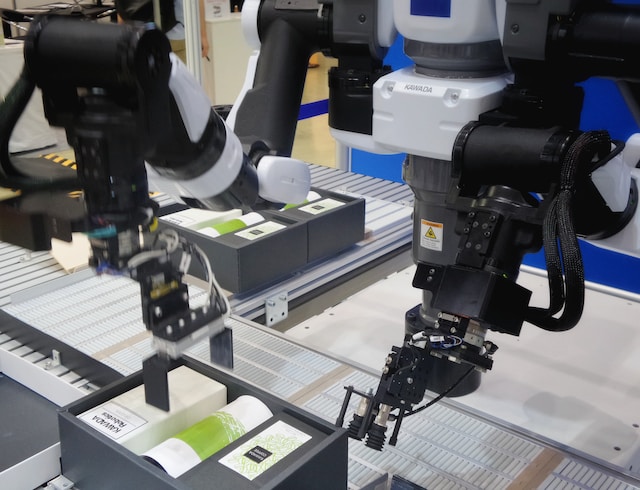Picture this: a manufacturing plant where the humming of machines melds with the focused chatter of workers. Robotic arms work in tandem with human hands, each doing what they do best for a teamwork experience. Welcome to the world of collaborative robotics in manufacturing plants, where cobots, as they’re affectionately known, become the ultimate coworkers.
Harmonizing human and machine labor
In the bustling arena of factory floors, cobots are quickly becoming indispensable allies. Unlike traditional robots confined to safety cages, these advanced machines are designed to work alongside humans safely for an optimized plant operations experience. Cobots are there to take on the heavy lifting or the repetitive tasks, leaving more intricate or creative duties to their human counterparts. It’s a partnership that not only leverages human ingenuity but also capitalizes on the unflagging stamina of machines. A car plant, for instance, might deploy cobots for boring yet critical jobs like screw driving or welding, freeing up its human workforce to handle finesse-requiring finishing touches.
With the advent of Industry 4.0, the collaboration between robots and humans is increasing in complexity and sophistication. As workers and cobots share tasks, exchanging tools, and coordinating on assembly sequences, the workflow becomes seamless. Integrating artificial intelligence in cobots allows them to anticipate human actions, leading to a highly fluid and adaptive process. This technological symbiosis not only enhances efficiency but also fosters a dynamic learning environment, where workers gain new skills through interaction with robotic technology.
Elevating safety and ergonomics on the floor
Worker safety is paramount, and incorporating cobots into the mix is making the factory environment safer than ever. With their precise sensors and programmed parameters, cobots drastically reduce the likelihood of workplace accidents. Plus, ergonomic benefits are through the roof. No more do employees have to risk injury by performing repetitive tasks that could lead to things like carpal tunnel syndrome. Now, a beverage company can integrate cobots into their assembly line to handle the monotonous packaging task, cutting down on employee fatigue and incidents.
Boosting productivity and quality
It’s all about doing more and doing it better. Cobots don’t tire or get distracted, allowing them to produce consistently high-quality outputs at speeds humans can’t match. For instance, an electronics manufacturer may employ cobots for circuit board assembly – a job requiring precision and speed that could be challenging for humans to maintain over long periods. As these cobots deftly place components, production surges without sacrificing quality, setting a new standard in manufacturing efficacy.
Navigating the challenges and solutions
Yes, integrating cobots into existing workflows isn’t without its challenges. The upfront investment can be daunting, and there’s a learning curve for workers who must adapt to their new colleagues. However, these obstacles are not insurmountable. Real-life case studies demonstrate that with the right training and gradual introduction, the workforce can confidently manage their programmable partners, leading to a scenario where the cost of cobots becomes an investment in long-term growth and sustainability.
Preparing for a collaborative future
The rapidly advancing technology behind cobots suggests a future where they become even more adept at complex tasks. Savvy businesses are preparing their teams for this future with specialized training programs. By upskilling staff to work harmoniously with cobots, companies are future-proofing their operations. Before we know it, robots adept at tasks we’ve not even conceived yet will stand shoulder-to-shoulder with human workers, creating new landmarks in productivity and innovation.
Measuring the impact on operations
Critical to understanding the real value of cobots is analyzing key performance indicators post-integration. Reports from various industries reveal significant gains in efficiency and a steady increase in return on investment over time. Companies often observe a marked difference in the before-and-after scenarios with cobots on board. This step-change, quantifiable in numbers and visible on the production floor, underscores the transformative impact cobots are having on manufacturing plants worldwide.







